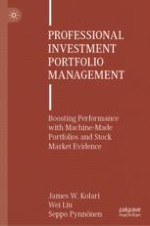A recent book by Kolari, Liu, and Huang (KLH) (
A new model of capital asset prices: Theory and evidence. Palgrave Macmillan, Cham, Switzerland, 2021) proposed a new capital asset pricing model named the
ZCAPM. The book is based on research work by the authors over the past decade, including Liu et al. (Financial Management Association 2012 conference, 2012), Liu (Doctoral dissertation, 2013), and Liu et al. (Southern Finance Association conference, 2020). Some recent publications on the ZCAPM are Kolari et al. (
Journal of Risk and Financial Management 15:1–23, 2022a), Kolari et al. (
Journal of International Financial Markets, Institutions, and Money 79:101607, 2022b), Kolari et al. (Western Economic Association International 2023 conference, 2023), Kolari and Pynnonen (
Investment valuation and asset pricing: Models and methods. Palgrave Macmillan, Cham, Switzerland, 2023), and Kolari et al. (Working paper available on SSRN, Texas A&M University, 2024). Moreover, the authors worked with the pension investment division at the Teachers Retirement System of Texas (TRS) to manage about $100 million using the model from 2012 to 2014. This practical experience was instrumental in helping us to develop innovative portfolio investment methods. Derived as a special case of Black’s (
Journal of Business 45: 444–454, 1972) zero-beta CAPM, the theoretical ZCAPM is a new CAPM variant. Like the CAPM, it contains a market factor, but rather than being associated with the beta risk of the market portfolio
M, it captures beta risk related to the average market return of all assets in the market. KLH posited that the latter average market return lies somewhere along the axis of symmetry of the Markowitz (
Journal of Finance 7:77–91, 1952,
Portfolio selection: Efficient diversification of investments. John Wiley & Sons, New York, NY, 1959) mean-variance investment parabola. Hence, beta risk is related to the overall movement of the entire investment parabola up and down over time. Using the investment parabola, KLH mathematically derived a second return dispersion factor based on the cross-sectional standard deviation of returns of all assets in the market (e.g., on any given day). A concept not previously known, return dispersion largely determines the width or span of the investment parabola. As this width changes over time, asset returns can be positively or negatively affected depending on whether they are located in the upper or lower half of the parabola. Importantly, they showed that this return dispersion factor yields a new bi-directional risk dubbed
zeta risk, which can be either positive or negative for any asset with respect to return dispersion changes. As the parabola moves over time, average market returns and market return dispersion affect asset returns via their sensitivity to these changes as measured by beta risk and zeta risk, respectively. The novel ZCAPM is unlike any previous theoretical or empirical model. Consequently, it cannot be empirically modeled using standard ordinary least squares (OLS) regression analyses used by virtually all other asset pricing models. Departing from previous models, the empirical ZCAPM (counterpart of the theoretical ZCAPM) was developed using expectation-maximization (EM) regression methods. The EM algorithm allows for the latent or unobserved positive or negative sign of zeta risk associated with market return dispersion. It computes a probability of the sign (direction) of zeta risk that is critical in measuring its association with return dispersion. No previous asset pricing models use EM regression in their empirical estimation. With the empirical ZCAPM in hand, KLH proceeded to test the model using U.S. stock returns over more than 50 years. The results were stunning—the ZCAPM virtually always outperformed a number of popular multifactor models in standard out-of-sample Fama and MacBeth (1973) cross-sectional tests. Recall from Chapter
3 that Fama and French (
Journal of Financial Economics 128:234–252, 2018) recommended that the validity of asset pricing models and their factors should be evaluated using out-of-sample tests and theoretical justification. The ZCAPM passes both of these validation tests. The tables had turned. Now multifactor models were less successful in explaining average stock returns than the CAPM-based ZCAPM. Previously, multifactor models were justified by their superior explanatory power in empirical tests of stock returns. U.S. test results in KLH were confirmed in other countries by Kolari et al. (Journal ofInternational Financial Markets, Institutions, and Money 79:101607, 2022b), who investigated stock returns in Canada, France, Germany, Japan, and the United Kingdom. In repeated tests in different sample periods and for different test asset portfolios as well as individual stocks, zeta risk in the ZCAPM is very significantly priced in cross-sectional tests. Indeed, the significance of zeta risk consistently surpasses those of widely accepted factors in multifactor models. Adding further evidence, in a recent working paper by Kolari et al. (Testing for missing asset pricing factors, 2023), the authors showed that zeta risk premiums almost completely explain Jensen’s alpha (
\(\alpha\)) coefficients in the market model version of the CAPM. Thus, no missing factors remain after taking into account return dispersion and related zeta risk. The long search for alpha in empirical asset pricing studies, and with it the search for multifactors to explain alpha, is over. The CAPM is not dead but alive and well in the form of the ZCAPM. Surprisingly, the ZCAPM suggests that multifactors are rough measures of return dispersion and therefore related to zeta risk. Hence, by implication, all multifactor models are related to the CAPM to some extent. Akin to the old Keynesian economics saying, KLH (p. 270) inferred that: “We are all Sharpians now.” This chapter provides an overview of the theoretical ZCAPM. It is important to understand the theory underlying this new model before going to the empirical ZCAPM in the next chapter. We later use the ZCAPM to build investment portfolios using beta and zeta risk. By controlling risk, as we will show in forthcoming chapters, we can create relatively efficient portfolios that well outperform general market indexes in terms of returns per unit risk.
